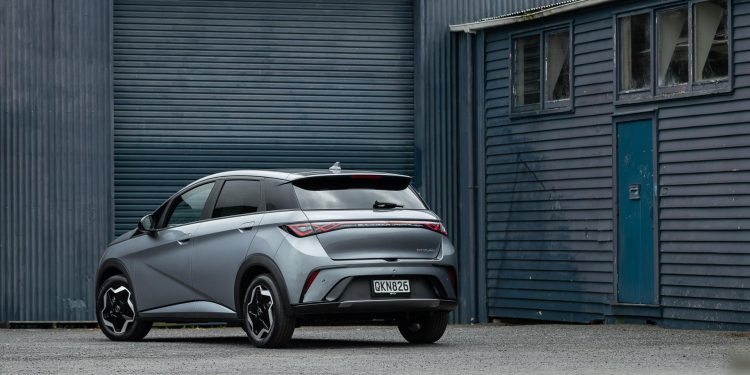2024 BYD Dolphin Standard review
Words: Peter Louisson | Photos: Isaac Western
After a most successful year of sales here with just a single model, the BYD Atto 3, BYD now has two more, the BYD Seal and the Dolphin. It’s the latter we’re checking out here, in base or Standard guise ($49,990).
Not that it is exactly a base spec model. BYD doesn’t do that; both variants are specified the same with items like a panoramic glass roof, powered seats finished in synthetic leather, 16-inch alloys, all the latest safety bongers, a Qi charger, LED lights, a heat pump and even a vehicle to load facility.
What’s different from the Dolphin Extended version is battery size and thus range; this one has a 45kWh battery pack for a WLTP range of 340km while the Extended has a 60kWh pack and 430km of range.
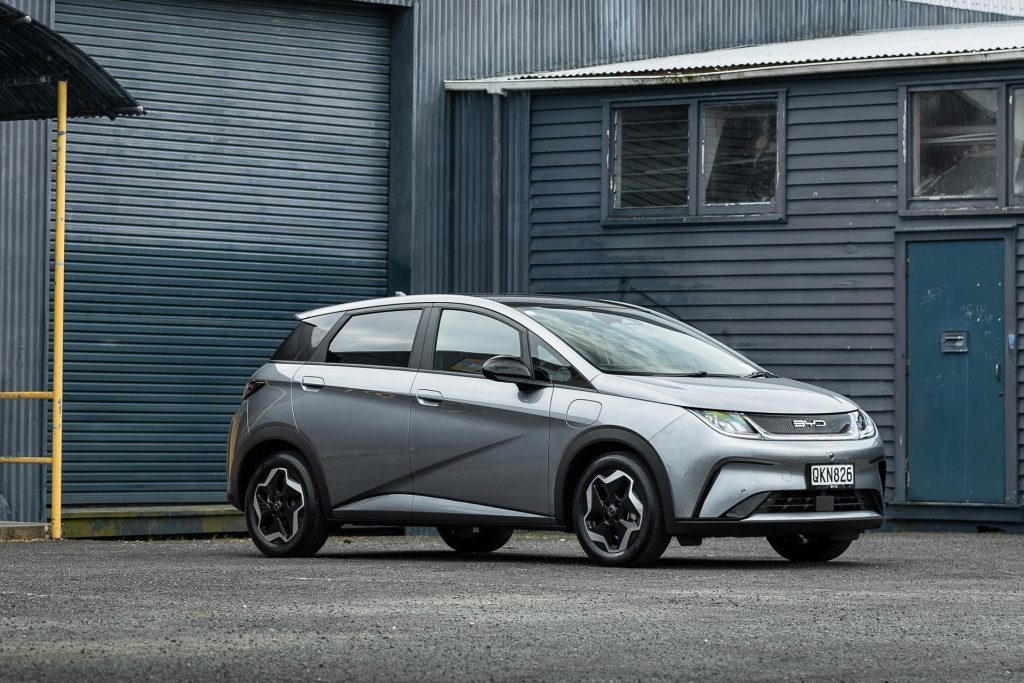
The motor in the standard car is also less potent, offering 70kW and 180Nm. That’s well down on the 150kW/310Nm figures for the Extended variant. Despite being 150kg lighter, Standard is only half as quick, or twice as slow if you like.
We measured a 0-100 time of 12.5sec, against the 7sec claim for the $55,990 Extended. So for the $6k difference there’s quite the performance upgrade, and you also get almost 100km of extra range.
Plus there’s a multilink rear instead of a torsion beam in the lesser version.
Where the Extended is like a Bottlenose variety, all brimming with muscle and vigour, the Standard is more porpoise-like, rather more shy and retiring.
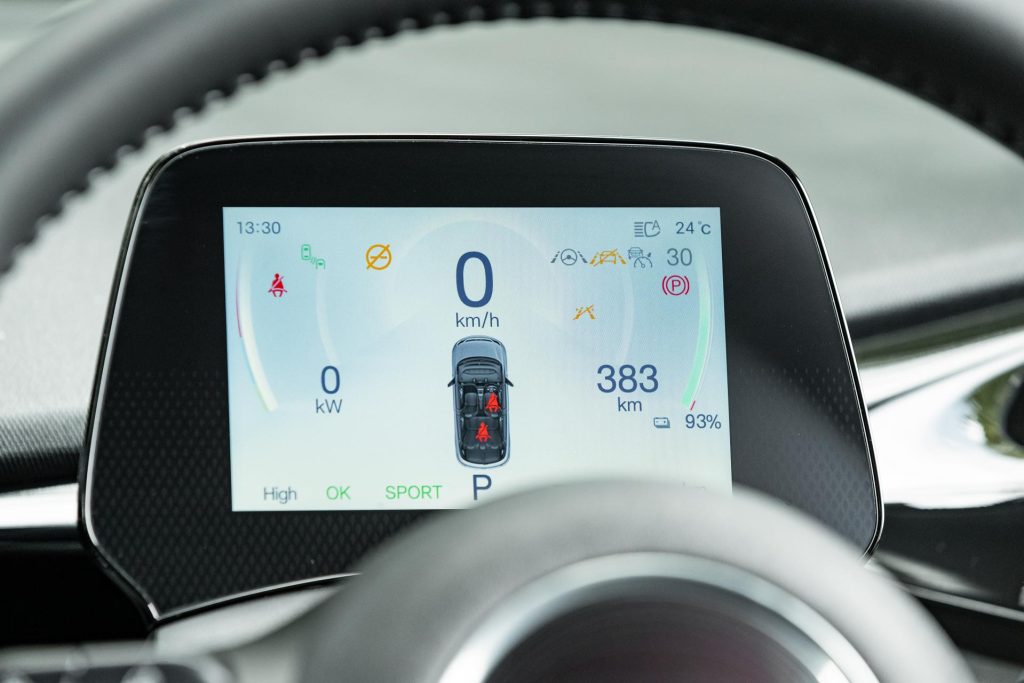
Its 70kW/180Nm motor feels okay on the performance front so long as you’re not in a hurry. It feels even more okay if you select the Sport mode, with a slight lift in energy. That’s where we left it most of the time on the open road.
Comfort works okay in town. But you get the feeling there isn’t a whole lot of extra performance on tap when required. And that’s the case; go for an overtake and you really need the lane on the other side to be well clear of oncoming traffic.
Figure on a minimum of 270m and near enough to 10sec for an open road pass. That’s where like-priced competition such as the MG4 Excite (51kWh) get a real leg up with a sprint time in the sevens.
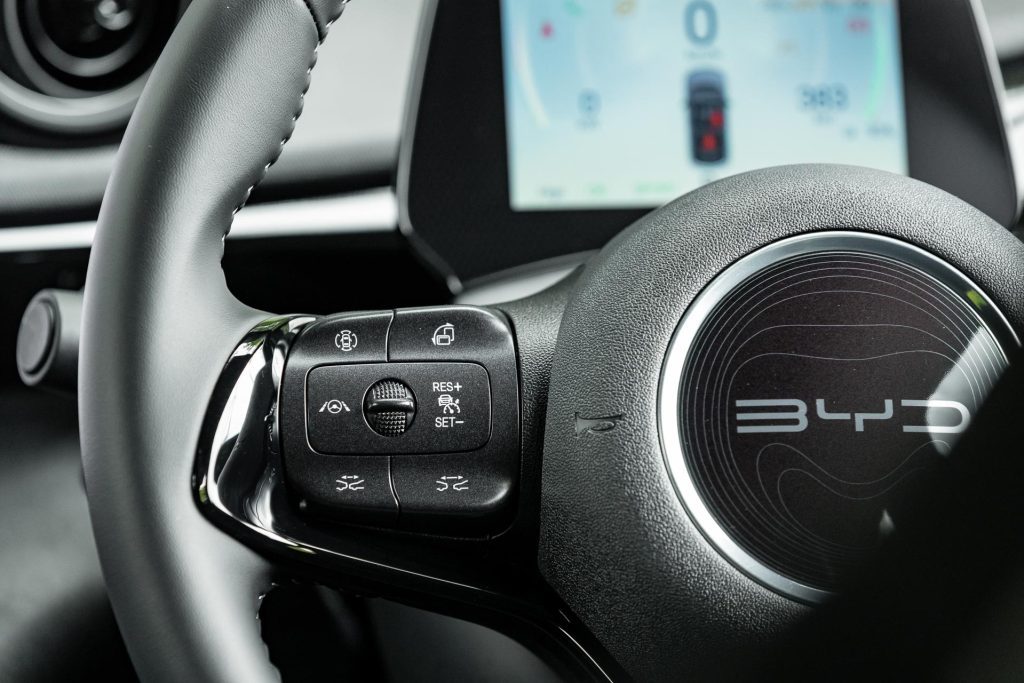
There’s little awry with how the Dolphin deals to the bendy bits; it turns in nicely, holds a line well, and the suspension deals to bumps, like the Atto 3.
It’s even quite quiet doing so. That’s in part due to the 195/60R16 Eco Master rubber. However, its brake performance was disappointing, just squeaking under the 40m mark during a 100-0 emergency stop.
And the pedal doesn’t reward with much feedback either.
BYD suggests the Standard version is more for fleet sales, up against the likes of the Toyota Corolla and Mazda3, both of which start out life in the late $30k area.
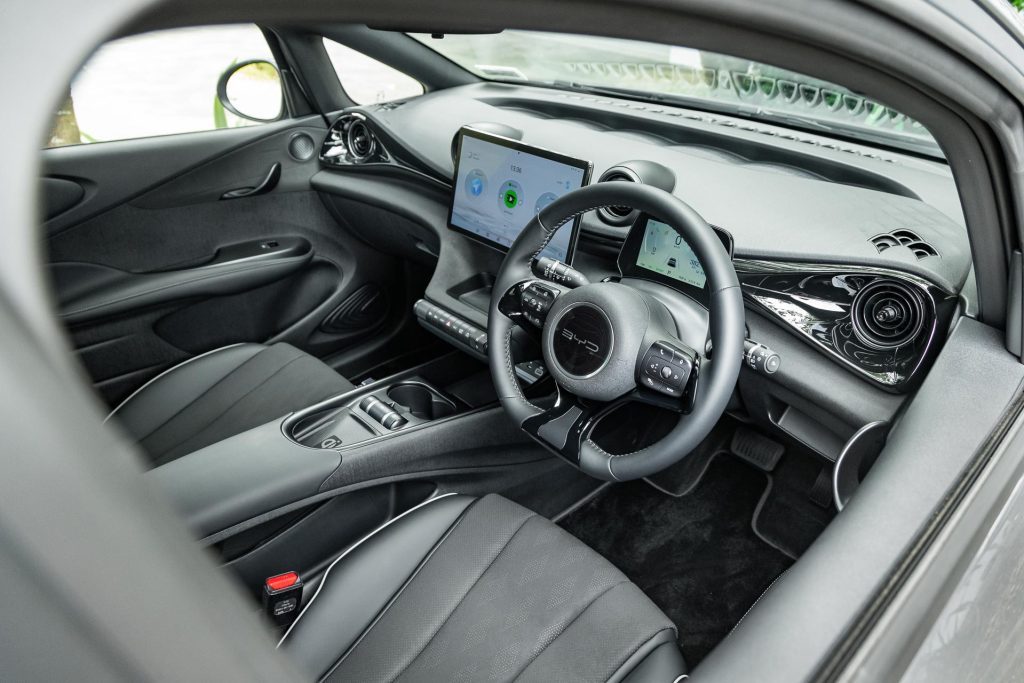
The Corolla moreover, is a hybrid, and can be had as a slightly more expensive Cross variant, also hybrid, at price points around Dolphin’s.
The MG interior isn’t quite as tasty as the Dolphin’s which has less in the way of hard plastics, more in the way of interesting finishes, like on the door cards. Door openers resemble dolphin fins.
And the seats are nicely upholstered too, in a type of matte synthetic leather. For a 4.3m car, rear seat space is impressive, all thanks to a 2700mm wheelbase.
Hatch capacity of 345L is less so but split folding expands that to 1310L.
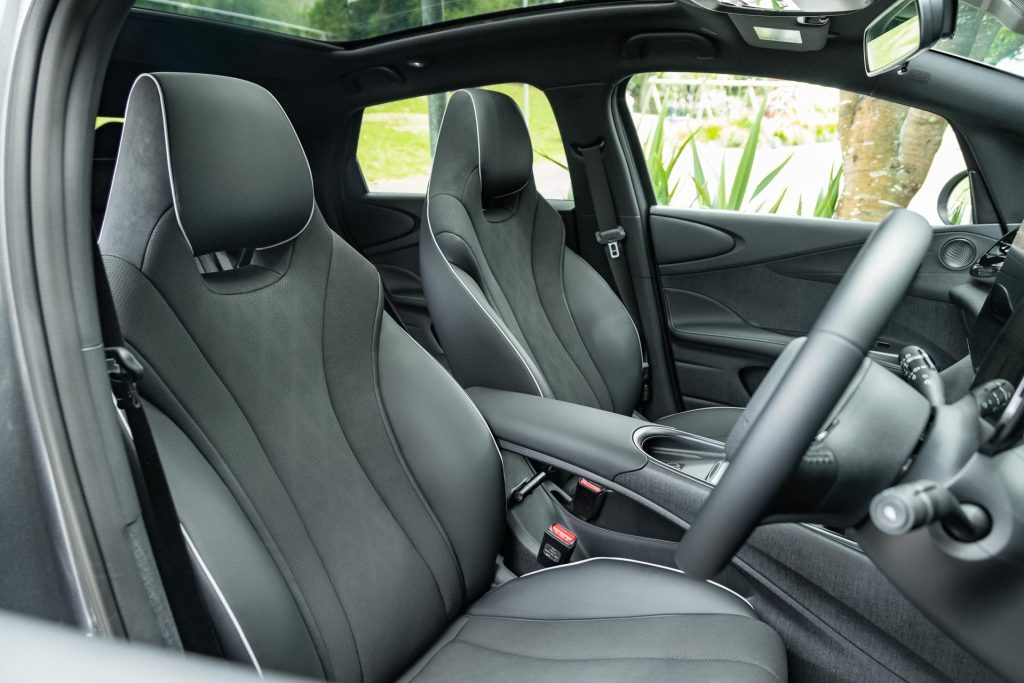
One other aspect worth nothing. The Dolphin has the same tendency to scald driver misdemeanours as Seal, banging on insistently with minor speed indiscretions, and bonging when nearing lane markings.
Traffic sign recognition, lane change warning and emergency lane changing can all be silenced but you need to do so each time you jump back in the car.
That’s unless you enjoy the feedback. Otherwise, the car rides quietly, the worst SPL figures barely eclipsing the 70dB mark.
As to energy use, it seemed to consume about one-third of battery range in a 106km trip up north, which is all open road, all at around 80-100km/h.
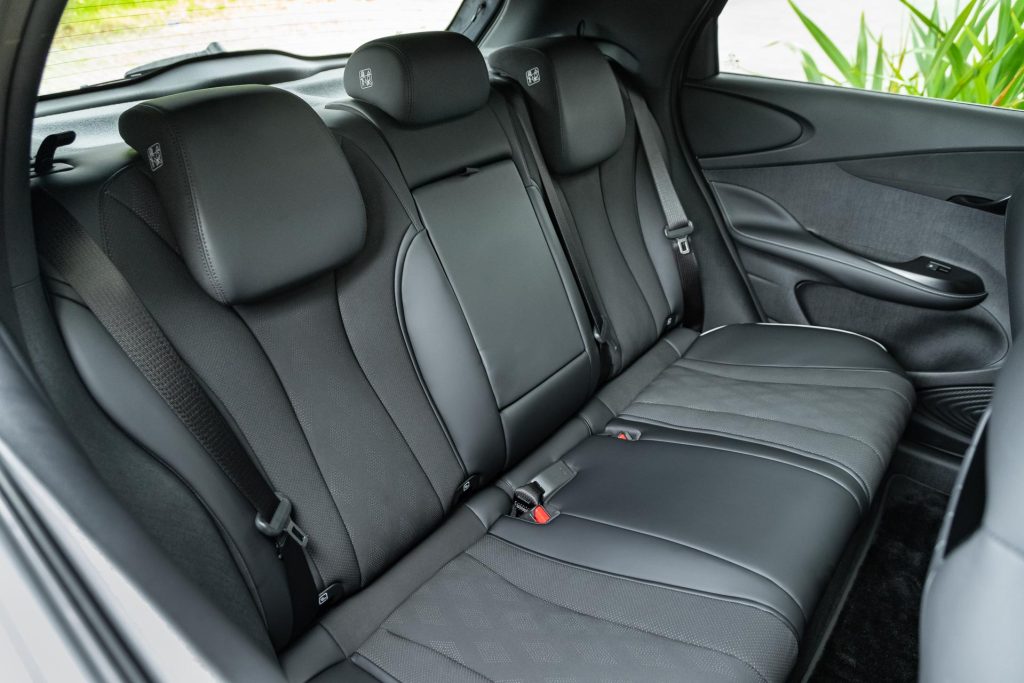
So you might expect a full charge to last for about 300km in that scenario. The claimed 340km of mixed travel seems about right then, in a real world setting.
Mean energy use is pretty good, under the quoted figure much of the time, with 12s and 13s the norm.
Essentially, the Standard Dolphin is best oriented towards urban work where its modest performance isn’t an issue and meagre energy consumption and zero emissions are positives.

Those wanting more pep, range, and dynamics will probably prefer the similarly priced MG MG4 equivalent but on the understanding that the spec and interior fitout aren’t quite as good.
| Model | BYD Dolphin Standard |
| Price | $49,990 |
| Max Power | 70kW |
| Max Torque | 180Nm |
| Battery/Range | 44.9kWh / 340km |
| Drivetrain | Single-speed auto, FWD |
| 0-100 km/h | 12.51s |
| Power Use | 15.2kWh/100km |
| C02 Output | 0g/km |
| Weight | 1506kg (claimed) |
This story first appeared in the March 2024 issue of NZ Autocar magazine.


